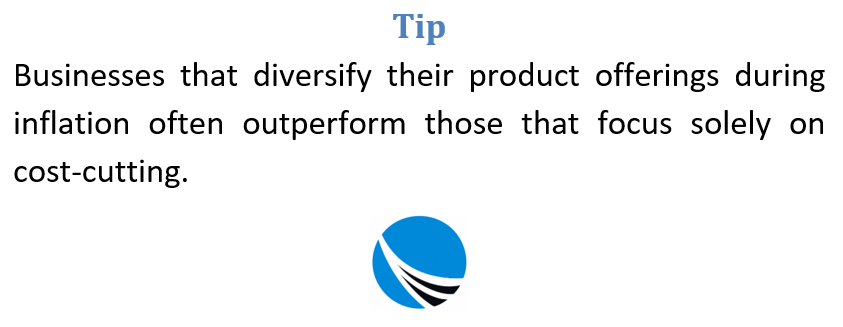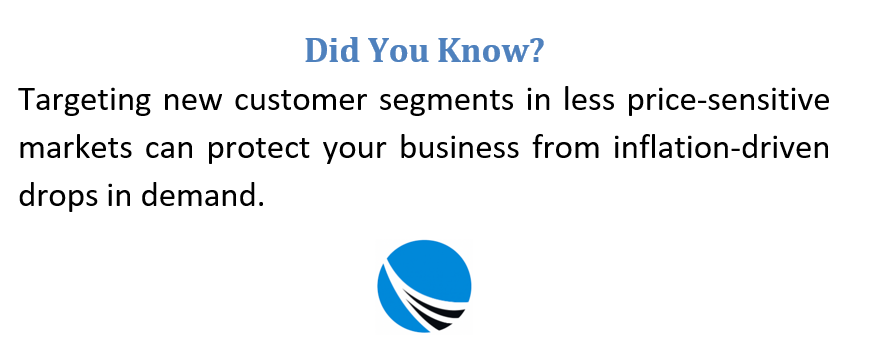Rising inflation poses a significant challenge to businesses, often stretching budgets, squeezing profit margins, and unsettling long-term plans. With supply disruptions, workforce shortages, and erratic weather patterns compounding the situation, adapting quickly is essential. Rather than waiting for economic stability to return, businesses can take concrete steps to reinforce their financial footing and ensure long-term growth.

Reframe Your Pricing Strategy
One of the most direct ways to respond to inflation is by revisiting your pricing model. While raising prices may seem like a risky move—especially if your customers are cost-conscious—it may be necessary for survival. That said, it’s crucial to approach price adjustments thoughtfully. Start by assessing your current value proposition. Are there premium features or unique selling points that justify a higher price? Small, incremental increases often work better than sudden, sharp jumps.
On the flip side, holding prices steady to maintain customer loyalty can earn goodwill but might reduce your profits. If you go this route, be sure to have a plan in place to make up for reduced margins elsewhere.
Tap Into Untapped Markets
A shift in focus can open new revenue streams. If your current audience is too sensitive to price changes, consider targeting a different demographic or customer segment. This might mean marketing your offerings to a different region or adapting your products to meet the preferences of a new audience.
Entering new markets can come with startup costs—marketing, logistics, and product adaptations—but it can also ease dependence on one customer base and diversify your revenue, making you less vulnerable to local economic shocks.
Create High-Margin Products or Services
Inflation creates an ideal moment to review your product line. Instead of offering more for less, consider doing the opposite: innovating around value. Introduce products or services that solve pressing problems or offer convenience and exclusivity—features people may be willing to pay a premium for. Higher-margin offerings give you more financial room to handle rising operational costs and help your business stand out.

Strengthen Your Cash Position
Maintaining a healthy cash reserve gives your business breathing room in tough times. Examine your current assets and identify any that can be liquidated without disrupting operations. Idle equipment, excess inventory, or low-performing investments may be better used as working capital.
Even small steps, such as reviewing supplier contracts or renegotiating payment terms, can help free up funds. Look internally for cash—your balance sheet might be hiding opportunities to boost liquidity.
Revamp the Business Model
In times of economic strain, it may be necessary to rethink how your business operates. Instead of clinging to old models that no longer work, use this moment to critically evaluate what stays and what goes.
This could involve eliminating unprofitable products or services, scaling down operations in certain areas, or redirecting resources to more promising ventures. You might also consider modifying your staffing structure, which can free up funds for innovation and growth. Think of it not as downsizing, but as realignment.
Leverage this reset period to revisit your core mission. If you were starting from scratch today, what would you build? Let that vision guide your restructuring decisions.
Focus on Stronger Market Positioning
Inflation impacts everyone, but businesses that are seen as valuable and essential tend to fare better. Now is the time to sharpen your branding and focus on what makes your business unique. Whether it’s reliability, personalized service, or local knowledge—lean into it.
Build a marketing message that reassures customers of your continued value, even amid rising prices. People are more likely to stay loyal if they understand what they’re getting in return.
Boost Sales to Stay Ahead
If cutting costs isn’t enough, increasing sales can help offset inflation’s impact. Finding ways to generate more revenue ensures your bottom line keeps up with expenses.
Look at under-served segments of your market. Are there groups with unmet needs your business could cater to? Launch tailored campaigns, try limited-edition offers, or repackage existing products to appeal to these customers.
You can also diversify your revenue by expanding your product or service range. Offering add-ons or complementary services can increase the value of every sale.
Improve Operational Efficiency
Small inefficiencies add up. Inflation offers a compelling reason to audit your operations and identify where costs can be trimmed without compromising quality.
Implementing digital tools, automating repetitive tasks, or refining your supply chain could lead to significant savings. It might also be worth reviewing contracts and renegotiating terms with suppliers. A leaner operation is not just cheaper—it’s more adaptable.
Explore Geographic Expansion
Venturing beyond your current locale can offer access to new customer pools and more favorable economic conditions. Research markets that may be less affected by inflation or where your offerings are in high demand.
This expansion doesn’t always require physical presence. E-commerce, partnerships with local vendors, or pop-up events can serve as low-risk ways to test a new region’s potential.
Prepare for Future Disruptions
Adopting an inflation-conscious mindset now prepares your business for long-term sustainability. Track industry trends, stay informed on policy changes, and keep your budget flexible. Regularly review your financial projections and stress test your business against various scenarios.
Develop a plan that outlines the steps your business will take if inflation worsens or if another economic disruption emerges. Having a blueprint in place gives you confidence to act swiftly when challenges arise.
Taking the First Step
Start by determining how long your current strategy can keep your business afloat. If inflation is already cutting deep into your profits, delaying action can be more costly than pivoting now. Decide which combination of strategies fits your business model best—some may require small adjustments, while others might need bold restructuring.
Even modest shifts—like reducing waste or optimizing staff scheduling—can create wiggle room in your margins. The key is to act early and iterate.
Final Thoughts
Inflation is not just a passing storm—it’s a reality that businesses must prepare for. While no single solution fits all, combining multiple approaches—such as boosting cash reserves, enhancing your value proposition, exploring new markets, and refining your operations—can help future-proof your business.
Being proactive rather than reactive ensures that your company isn’t just surviving inflation, but learning, growing, and emerging stronger on the other side.
Frequently Asked Questions
What is the biggest risk of doing nothing during inflation?
Standing still means rising costs can quietly eat away at your profits. Eventually, you may struggle to cover basic expenses or fund future growth.

Can I raise prices without losing customers?
Yes, if done carefully. Small, transparent price increases paired with strong communication and added value can retain loyal customers.
How can I find extra cash within the business?
Start by reviewing unused equipment, excess inventory, or underperforming assets. Even renegotiating contracts or payment terms can free up needed cash.
Should I stop offering low-profit products?
Absolutely. Streamlining your offerings lets you focus on what works best and ensures you’re not pouring resources into things that drag you down.
What if my customers are very price-sensitive?
Try targeting different customer segments or markets that are less sensitive to price and more focused on quality, convenience, or brand trust.
Is it wise to expand during inflation?
It can be, if it’s strategic. Expanding into new regions or demographics can open up fresh revenue streams and reduce reliance on your current market.
How does restructuring help during inflation?
It helps you shed what’s no longer working and rebuild a leaner, smarter version of your business that’s better suited for tough times.
Can operational changes really make a difference?
Yes. Even small improvements—like automation, better workflows, or supply chain tweaks—can cut costs and boost productivity.
Should I invest in new products now?
If they offer higher margins or tap into unmet needs, yes. Innovation can help differentiate your brand and cushion against rising costs.
What’s the first step to future-proofing?
Assess your current financial runway. From there, choose a mix of smart adjustments that improve margins, build resilience, and prepare you for whatever’s next.

